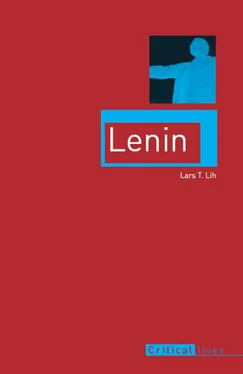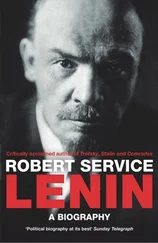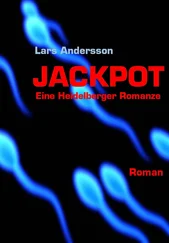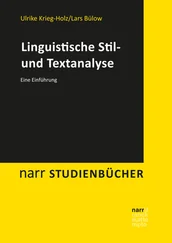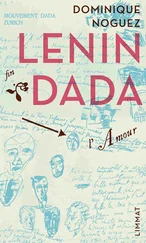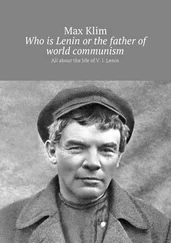Lars Lih - Lenin
Здесь есть возможность читать онлайн «Lars Lih - Lenin» весь текст электронной книги совершенно бесплатно (целиком полную версию без сокращений). В некоторых случаях можно слушать аудио, скачать через торрент в формате fb2 и присутствует краткое содержание. Город: London, Год выпуска: 2012, ISBN: 2012, Издательство: Reaktion Books, Жанр: Биографии и Мемуары, История, на английском языке. Описание произведения, (предисловие) а так же отзывы посетителей доступны на портале библиотеки ЛибКат.
- Название:Lenin
- Автор:
- Издательство:Reaktion Books
- Жанр:
- Год:2012
- Город:London
- ISBN:9781780230030
- Рейтинг книги:3 / 5. Голосов: 1
-
Избранное:Добавить в избранное
- Отзывы:
-
Ваша оценка:
- 60
- 1
- 2
- 3
- 4
- 5
Lenin: краткое содержание, описание и аннотация
Предлагаем к чтению аннотацию, описание, краткое содержание или предисловие (зависит от того, что написал сам автор книги «Lenin»). Если вы не нашли необходимую информацию о книге — напишите в комментариях, мы постараемся отыскать её.
Lenin — читать онлайн бесплатно полную книгу (весь текст) целиком
Ниже представлен текст книги, разбитый по страницам. Система сохранения места последней прочитанной страницы, позволяет с удобством читать онлайн бесплатно книгу «Lenin», без необходимости каждый раз заново искать на чём Вы остановились. Поставьте закладку, и сможете в любой момент перейти на страницу, на которой закончили чтение.
Интервал:
Закладка:
Another and even more direct way of way of revealing the advantages of socialism was providing the peasants with equipment, clothing, medical supplies and other necessary items through state channels . As with the issue of violence, a common misunderstanding makes it imperative to stress that even during the civil war Lenin insisted on the need to provide material incentives to the countryside. He hardly needed to wait for NEP to realize this. Of course, during the civil war, material items to exchange with the peasants were far and few between:
August 1919:
It’s not hard to understand that the workers’ government cannot now give the peasant goods, because industry is at a standstill. There’s no bread, no fuel, no industry. Every reasonable peasant will agree that it is necessary to give his surplus grain to the starving worker as a loan to be paid off by industrial items. 39
March 1920:
The imperialist war and then the war against counter-revolution, however, have laid waste to and ruined the entire country. We must bend all efforts to conquer the chaos, to restore industry and agriculture, and to give the peasants the goods they need in exchange for grain. 40
Lenin and the Bolsheviks promised to provide the peasants with exchange items, but they wanted to provide these goods via state channels. Lenin admitted that the state organs of distribution still had many defects ‘of which the workers’ government is very well aware, but which cannot be eliminated in the first period of the transition to socialism’. 41Nevertheless, Lenin looked forward to steady progress toward genuinely socialist distribution. Hostilities would cease, industry would revive and the socialist state would get its act together by improving its own organizations.
The decriminalization of the private grain trade in 1921 ended this scenario of steady progress toward socialist distribution. The reliance on long-term projects such as electrification also meant that socialist transformation of the countryside had to be put on hold. In spring 1921 Lenin justified the introduction of NEP by remarking that ‘as long as we have not remade [the peasant], as long as large-scale machinery has not remade him, we have to assure him the possibility of being his own boss’. 42The key economic link between town and country was no longer the state, but once again the market and the private merchant. This was indeed a severe setback, a retreat on the road to socialism. Therefore, in one of his final articles, Lenin urged his readers not to forget about the original project of using state-controlled channels such as the cooperatives to gradually crowd out private trade. 43
NEP did not change Lenin’s strategy for enlisting the support of the middle peasant for socialism – it merely changed the dimensions of the problem. The basic goal remained, as before, to provide abundant material goods through state channels. Before NEP, the enemy to be overcome was the pervasive underground market. After NEP, it was the decriminalized private grain market – the same enemy, with a different legal status.
Lenin’s strategy can be labelled the kto-kovo scenario. This label may strike some readers as paradoxical, because the phrase kto-kovo , or ‘who-whom’, has entered educated folklore as Lenin’s favourite phrase and an expression of his essentially hard-line outlook. ‘Who-whom’ is therefore usually glossed as something on the order of ‘who shall destroy whom?’ In reality Lenin only used the phrase two or three times at the very end of his career, and even then did not give it any prominence. If kto-kovo had not been picked up, first by Zinoviev and then by other Bolshevik leaders, the phrase would have been long forgotten. Kto-kovo was adopted as a pithy expression of the logic of NEP – not usually considered Lenin at his most hard-line. 44The phrase should be glossed as something like the following: ‘which class will succeed in winning the loyalty of the peasants: the proletariat or the now-tolerated bourgeoisie (the so-called nepman )?’ Although Lenin only let drop the phrase kto-kovo a couple of offhand times, he expressed often and forcefully the scenario to which the term later became attached. Perhaps the most eloquent version is found in the concluding words of one of his last articles:
In the final analysis, the fate of our republic will depend on whether the peasant masses will stand by the working class, loyal to their alliance, or whether they will permit the ‘nepmen’, that is, the new bourgeoisie, to drive a wedge between them and the working class, to create a schism between them and the working class. The more clearly we see this alternative, the more clearly all our workers and peasants understand it, the greater are the chances that we shall avoid a schism that would be fatal for the Soviet republic. 45
The nepman or new bourgeoisie had now replaced the liberal bourgeoisie in the role of rival leadership. Although kto-kovo was a late coinage to express what Lenin saw as the class logic of NEP, it also reflected the basic logic of Lenin’s heroic scenario. The kto-kovo scenario is the Old Bolshevik scenario dusted off and applied to the realities of NEP.
And so it appears that Lenin came up with a new scenario that still reflected the optimistic spirit of his original one of inspiring class leadership. But the adjustment did not come without cost. As in the case of international revolution, the new scenario had a built-in anxiety factor that had previously been absent. One of Lenin’s fundamental axioms had always been that individual small-scale production for the market will inevitably give rise to full-scale capitalism. This axiom was not a source of anxiety for the original Old Bolshevik scenario. On the contrary, capitalist transformation of Russia was seen as a progressive factor, creating indefatigable fighters for the democratic revolution and later for the socialist revolution. But circumstances had altered. Now the capitalism created by the ‘petty-bourgeois peasantry’ was a threat to steady steps to socialism and therefore to the whole legitimacy of socialist revolution in Russia.
Lenin expressed this anxiety with great intensity after 1919. It shows up in his diatribes against ‘free trade’ during the civil war. The amorphous but mighty force of peasant capitalism was fighting a war against the grain monopoly – and in so doing it was condemning the cities to starvation. As he expostulated in the summer of 1920: 46
The abolition of classes not only means driving out the landlords and capitalists – something we accomplished with comparative ease – it means abolishing the small commodity producers [= those who produce for the market], and they cannot be driven out; we must live in harmony them; they can (and must) by remoulded and re-educated only by very prolonged, slow, cautious organizational work.
They encircle the proletariat on every side with a petty-bourgeois atmosphere, which permeates and corrupts the proletariat and causes constant relapses among the proletariat into petty-bourgeois spinelessness, disunity, individualism, and alternate moods of exaltation and dejection… Millions of millions of small producers, by their ordinary, everyday, imperceptible, elusive, demoralizing activity achieve the very results which the bourgeoisie need and which restore the bourgeoisie. 47
The retreat associated with NEP only intensified this anxiety. Lenin’s obsessing about the abstract force of ‘petty-bourgeois individual production’ sits uneasily next to his optimistic hopes for class leadership of the middle peasant. Yet both have deep roots in his life-long heroic scenario.
The Cultural Deficit
Интервал:
Закладка:
Похожие книги на «Lenin»
Представляем Вашему вниманию похожие книги на «Lenin» списком для выбора. Мы отобрали схожую по названию и смыслу литературу в надежде предоставить читателям больше вариантов отыскать новые, интересные, ещё непрочитанные произведения.
Обсуждение, отзывы о книге «Lenin» и просто собственные мнения читателей. Оставьте ваши комментарии, напишите, что Вы думаете о произведении, его смысле или главных героях. Укажите что конкретно понравилось, а что нет, и почему Вы так считаете.
